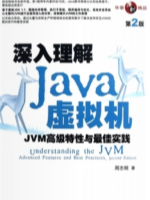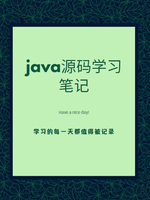5.1 异常处理的方式
- ① try..catch..finally 。
- ② throw 和 throws 。
5.2 异常 throw
- Java 程序的执行过程中如果出现了异常,会产生一个 异常类对象 ,该异常对象将被提交给 JVM ,这个过程称为 抛出异常 。
- 异常对象的生成:
- ① 由 JVM 自动生成 :程序运行结果中,JVM 检测到程序发生了问题,如果在当前代码中没有找到相应的处理程序,就会在后台自动创建一个对应的异常类的实例对象并抛出(自动抛出)。
- ② 由开发人员 手动抛出 :由开发人员通过 throw new Exception对象 或 throw new Exception的子类对象 手动抛出异常。
- 手动抛出异常的场景:在定义方法的时候,方法需要接收参数,当调用方法使用接收到的参数的时候,需要先对参数数据进行合法性的校验,数据如果不合法,就应该告诉调用者,这时我们可以通过抛出异常的方式来告诉调用者。
- 在 Java 中,提供了一个 throw 的关键字,它用来抛出一个指定的异常的对象。
- 手动抛出异常的步骤:
- ① 创建一个异常对象。
- ② 通过 throw new 异常对象 ,将异常告诉给调用者。
注意:
- throw 关键字必须用在方法内,它用来抛出一个异常对象,将这个异常传递给方法的调用者,并结束当前方法的执行。
方法的调用者要么进行异常捕获处理,要么使用 throws 声明处理,当然也可以通过 throw 关键字继续抛出异常。
语法:
thorw new 异常类名(实参);
示例:
package com.github.demo2;/**** @author maxiaoke.com* @version 1.0* @return*/public class TestException {public static void main(String[] args) {int[] arr = {1, 2, 3};int element = getElement(arr, 2);System.out.println("element = " + element);/**Exception in thread "main" java.lang.ArrayIndexOutOfBoundsException: 数组索引越界at com.github.demo2.TestException.getElement(TestException.java:27)at com.github.demo2.TestException.main(TestException.java:16)*/int e = getElement(arr, 3);System.out.println("e = " + e);System.out.println("main方法结束");}public static int getElement(int[] arr, int index) {if (null == arr) {throw new NullPointerException("要访问的arr数组不存在");}if (index < 0 || index > arr.length - 1) {throw new ArrayIndexOutOfBoundsException("数组索引越界");}return arr[index];}}
5.3 声明异常 throws
声明异常 :将异常标识出来,告诉调用者。如果方法内通过 throw 关键字 编译时异常(非runtime异常) ,而没有捕获处理,那么必须通过throws 进行声明,让调用者进行处理。
关键字 throws 用在方法声明上,告诉调用者当前方法不处理异常,而是提醒该方法的调用者来处理异常。
语法:
修饰符 返回值类型 方法名(形参列表) throws 异常类名1,异常类名2...{}
示例:
package com.github.demo3;import java.io.File;import java.io.FileNotFoundException;/*** @author maxiaoke.com* @version 1.0* @return*/public class TestException {public static void main(String[] args) throws FileNotFoundException {readFile("java秘籍");}public static void readFile(String filePath) throws FileNotFoundException {File file = new File(filePath);if (!file.exists()) {throw new FileNotFoundException(filePath + "文件不存在");}}}
5.4 try…catch…finally
如果一个方法内没有抛出异常,该异常对象会被抛出给调用者方法中处理。如果异常没有在调用者方法中处理,它会继续抛给这个调用方法的上层方法。这个过程将一直继续下去,直到异常被处理,这个过程称为 捕获异常 。
如果一个异常回到 main 方法处,并且 main 方法也不处理,则程序终止运行。
语法:
try{...... //可能产生异常的代码 }catch( ExceptionName1 e ){...... //当产生ExceptionName1型异常时的处置措施 }catch( ExceptionName2 e ){...... //当产生ExceptionName2型异常时的处置措施 }finally{...... //无论是否发生异常,都无条件执行的语句}
解释:
- try :捕获异常的第一步是用 try{} 语句块选定捕获异常的范围,将可能出现异常的代码放到 try 语句块中。
- catch(Exception e) :
- 在 catch 语句块中是对 异常对象 进行处理的代码。每个 try 语句块可以伴随 一个或多个catch 语句,用于处理可能产生的 不同类型 的异常对象。
- 如果明确知道产生的是何种异常,可以用该异常类作为 catch 的参数,也可以用其父类作为 catch 的参数。
- 多个 catch 语句块,子类型在上,父类型在下。
- finally :
- 捕获异常的最后一步是通过 finally 语句为异常处理提供一个统一的出口,使得在程序流程到其它部分以后,能够对程序的状态做出统一的处理。
- 不论在try代码块中是否发生了异常,catch语句中是否执行,catch语句中是否有异常,catch语句中是否有return,finally块中的语句都会被执行。
注意:当在 try 或者 catch 中调用退出 JVM 的相关方法,例如 System.exit(0) ,此时 finally 不会执行,否则 finally 永远会执行。
示例:
package com.github.demo4;import java.io.File;import java.io.FileNotFoundException;/*** @author maxiaoke.com* @version 1.0* @return*/public class TestException {public static void main(String[] args) {readFile("不敲代码学会Java秘籍.txt");System.out.println("继续学习吧...");}public static void readFile(String filePath) {File file = new File(filePath);try {if (!file.exists()) {throw new FileNotFoundException(filePath + "文件不存在");}if (!file.isFile()) {throw new IllegalAccessException(filePath + "非法访问");}} catch (Exception e) {e.printStackTrace();} finally {System.out.println("这里的代码一定会执行");}}}
5.5 不捕获异常的情况
① 如果抛出的异常都是 Exception 或其子类型的运行时异常,这些运行时异常的特点是:即使没有使用 try 和 catch 捕获,Java 自己也能捕获,并且编译通过,但是运行的时候发生异常会使得程序终止运行。
② 如果抛出的异常都是 IOException 等类型的非运行异常,则 必须捕获,否则编译错误 。换言之,我们必须处理编译时异常,将这类类型的异常捕获,转换为运行时异常。
5.6 try … catch 新特性(JDK 1.7)
如果多个 catch 分支的异常处理代码一致的,在 JDK 1.7 之前是非常繁琐的。
try {}catch (异常类型 e){// 处理异常的代码}catch (异常类型 e){// 处理异常的代码}
但是,在 JDK 1.7 的时候可以简化上述的代码。
try {}catch (异常类型1 | 异常类型2 e){// 处理异常的代码}
示例:
package com.github.day09;import java.util.Scanner;/*** @author maxiaoke.com* @version 1.0*/public class TryCatchJDK7 {public static void main(String[] args) {Scanner input = new Scanner(System.in);try {System.out.print("请输入第一个整数:");int a = input.nextInt();System.out.print("请输入第二个整数:");int b = input.nextInt();int result = a / b;System.out.println("result = " + result);} catch (NumberFormatException | ArrayIndexOutOfBoundsException e) {System.out.println("数字格式不正确,请输入两个整数");} catch (ArithmeticException e) {System.out.println("第二个整数不能为0");} catch (Exception e) {System.out.println("其他错误");}input.close();}}








